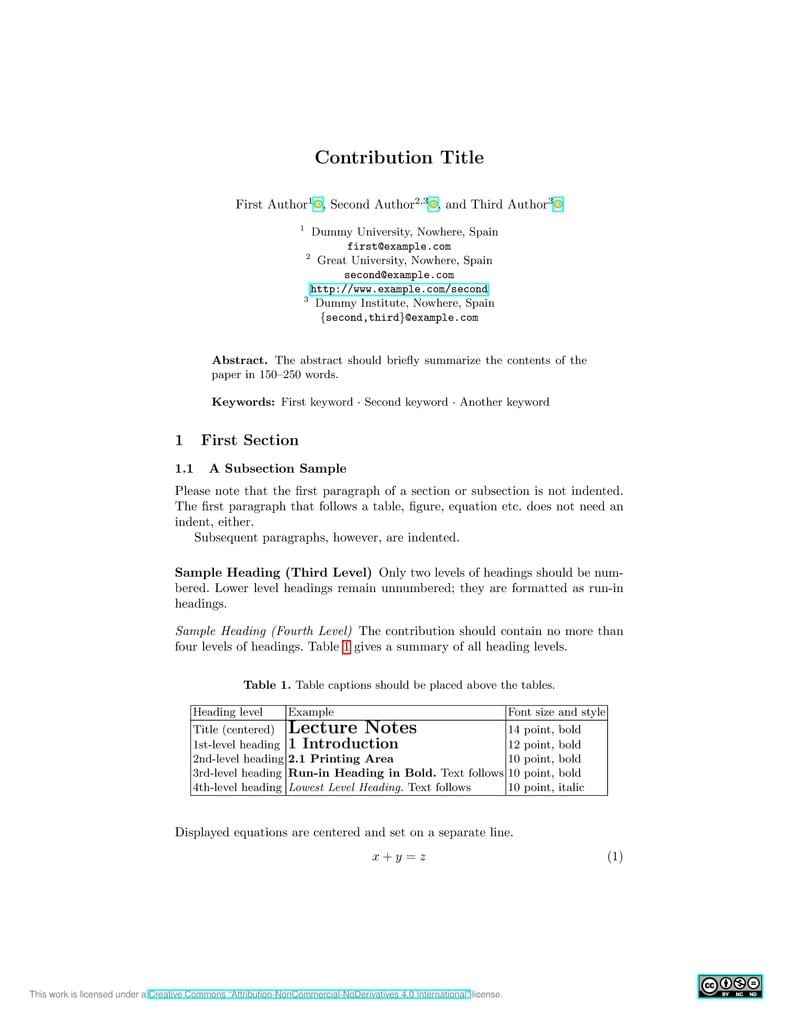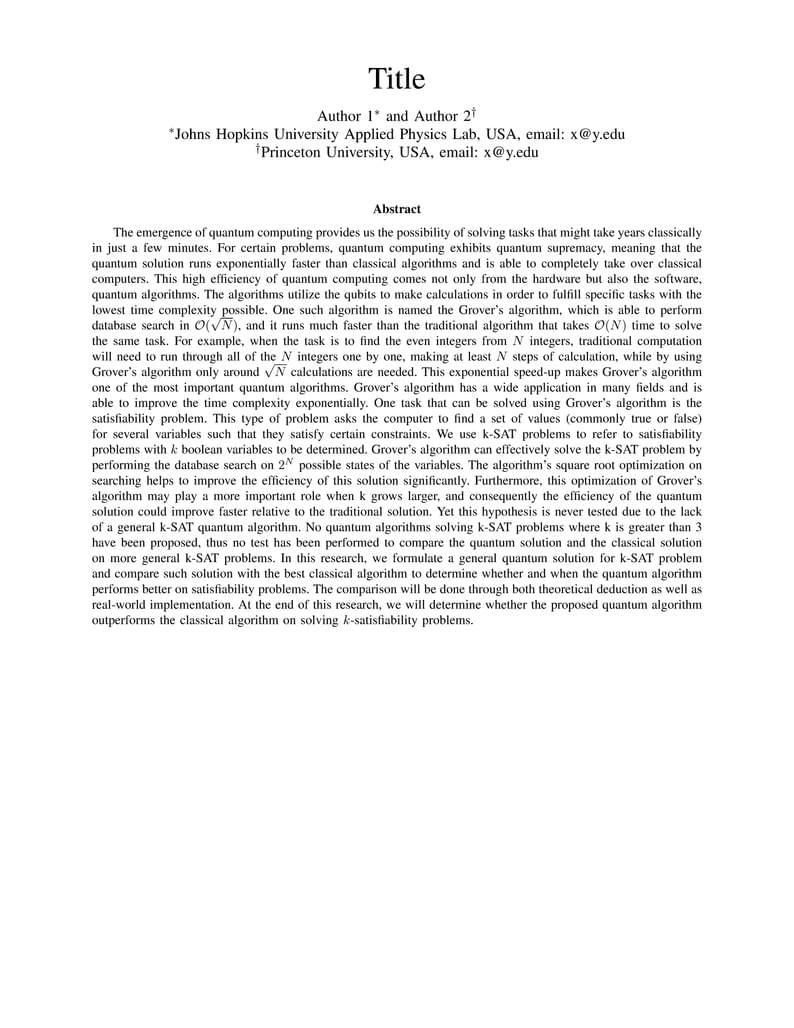LaTeX templates and examples — Conference Paper
Recent

Official template for regular papers (in English) to be sent to the Sistedes series of conferences. This template is based on the LNCS template, and includes the required license watermark required by the Sistedes Digital Library.

This template implements all formatting specifications for the Hawaii International Conference on System Sciences 51 and has been approved for its use by the conference chairs.

Template em LaTeX para o 4o Congresso Brasileiro de Fluidodinâmica Computacional (CBCFD), a ocorrer em Vitória, ES, de 18 a 20 de setembro de 2024.

Template for submitting Extended Abstracts to the 24th Central European Conference on Cryptology

Template for IUCr conference abstracts. For more information, please see IUCR's instructions.

Template for submissions to the Spanish Conference on Computer Graphics (CEIG 2022). Plantilla para el envío de trabajos a la Conferencia Española en informática Gráfica (CEIG 2022).

A simple abstract template for ExHILP 2023

Template for the camera-ready submission for the inclusion of IEEE Xplore. https://ewh.ieee.org/conf/stem/index.html

Photomechanics - IDICS conference 2021 - November 3-5, Nantes, France. https://pm-idics-2021.org/
\begin
Discover why over 20 million people worldwide trust Overleaf with their work.